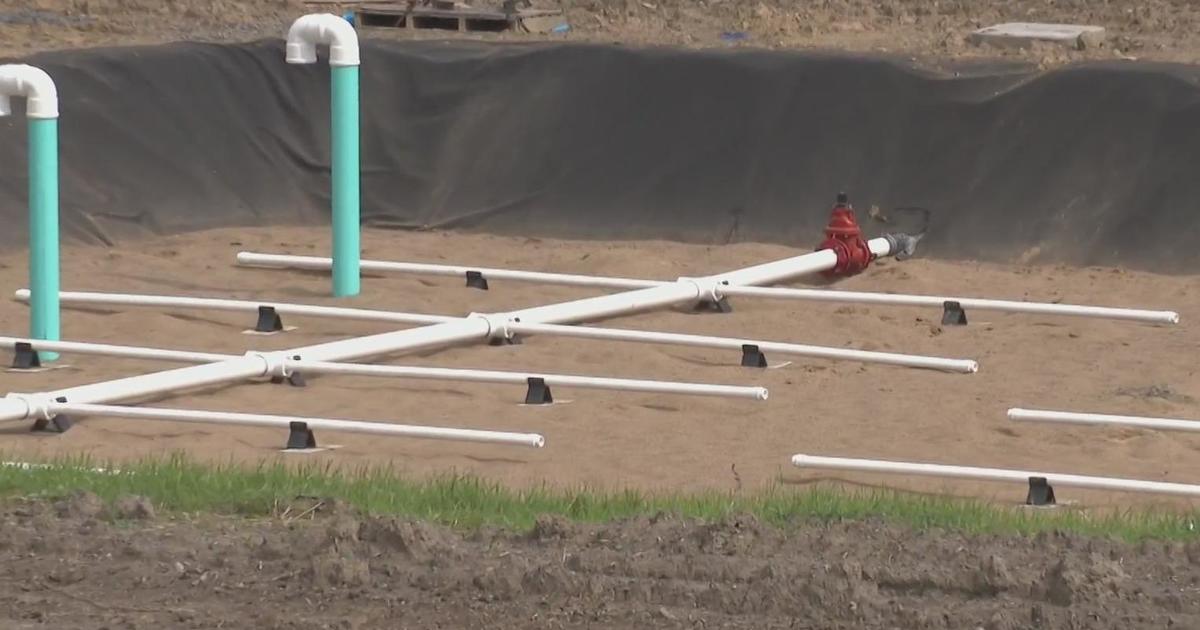'People are getting sick from something': Former regional EPA admin claims feds not doing enough to serve residents after East Palestine train derailment
EAST PALESTINE, Ohio (KDKA) - Why are people and their animals getting sick if officials declare the water and air safe?
It's a question officials responding to the train derailment in East Palestine, Ohio still have not cleared up more than three weeks after the crash.
KDKA spoke exclusively with a former U.S. EPA regional administrator, who gave insight into what may be contributing to the widespread health problems.
Judith Enck used to be the U.S. EPA Administrator for Region 2, an area that includes New York State. She isn't a part of the response to the train derailment, but she knows what it's like to respond to a major disaster as a federal official.
"These federal agencies know what to do, and they're not doing everything they need to do to serve the people," Enck said.
To start with, she said residents living in East Palestine should have stayed away longer after the toxic train derailment and controlled release of vinyl chloride.
"People came home, they had soot on their cars, on their garage doors, on their houses, and they likely began cleaning up on their own. That was a mistake," Enck said.
Enck said this is one aspect of why people and their animals are getting sick.
As of Sunday, U.S. EPA Region 5 Administrator, Debra Shore, who is responding to the derailment, said the air both inside and outside is safe to breathe, and the public water is safe to drink. This has been the case day after day since all forms of monitoring began.
However, people in the village and communities miles away continue to say they don't feel like themselves, with headaches, sore throats, rashes, and nausea.
They're confused.
"People are getting sick from something, so you can't say the air and the water are okay because they obviously are not," Enck said.
Shore said they are testing for vinyl chloride as a part of air screenings, but they're not testing for all of the chemicals that were on the train.
At a press conference Sunday, KDKA's Lauren Linder asked Shore if people could be getting sick from something they're not testing.
"You know, I'm not a medical professional, and we recommend that anybody who isn't feeling well, who shows symptoms of any illness, can seek out their medical provider, a doctor, a nurse," Shore said.
The same goes for chemicals like dioxins that could have formed while vinyl chloride was burning.
"We're not currently testing for dioxins. We are considering it," Shore said. "Dioxins are ubiquitous in the environment. They were here before the accident. They will be here after, and we don't have baseline information from this area to do a proper test, but we are talking to our toxicologist and looking into it."
Enck calls this an oversight by the EPA, who she said have scientists who can figure out possible breakdown chemicals. Those might just be what's causing peoples' health issues.
At the same time, Enck said the EPA needs to also test indoor surfaces besides the air.
"People are touching the surfaces, kids are rolling around on the rug, they're sucking on their toys," Enck said. "That dermal exposure and also inhaling chemical compounds can cause adverse health impacts."
In a statement released to KDKA, an EPA spokesperson said they're not at this time, stating, "commonly used household products would interfere too much."
As for the CDC, this weekend teams went door-to-door to get people to fill out chemical exposure surveys.
When asked Saturday the reason for health conditions in the community, CDC and Agency for Toxic Substances and Disease Registry Team Lead, Jill Shugart, couldn't give a clear answer.
"We do understand that there were a lot of hazardous materials that were spilled at the incident. However, we really need to look a little bit more at the data," Shugart said.
Enck said more needs to be done by them as well.
"That's not the same as committing to health monitoring," Enck said.
Enck said the CDC should start enrolling people in a medical monitoring program as soon as possible, but in the meantime, people should start documenting what they're experiencing and note the dates.
When it comes to water, Enck said it's unlikely that's causing people to get sick at the moment, as it will take time for contaminants to reach the source. However, she also feels it was premature for officials, including U.S. EPA Director Michael Regan to say the drinking water was fine.
"It may be fine that day, but EPA knows that it takes time for the contaminants in the soil to reach the aquifer," Enck said.



